Central Grasslands Forum - Fall 2018 (part 2)
CGREC Welcomes New Staff Members
The center is pleased to announce the hiring of three employees in 2018. Cody Wieland started as our livestock technician in April, Lisa Pederson as a state Extension livestock/beef quality assurance specialist in May and Erin Gaugler as our range research specialist in August.
Cody Wieland
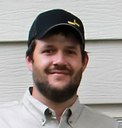
Wieland started as the CGREC livestock technician on May 1.
“This position allows me to try a new adventure in life: conducting research that not only helps me learn and better manage my personal cow herd, but helps others learn better management strategies that help ranchers improve grazing management, herd health, and genetic selection through reproductive and nutrition studies,” he says.
Prior to joining the CGREC, he worked for a private rancher near Streeter, where he helped manage a 1,000-head feedlot and calf out a 425-head herd.
He earned an Associate in Applied Science degree from the North Dakota State School of Science.
Lisa Pederson
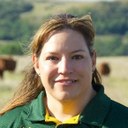
Pederson conducts Beef Quality Assurance programming for the state’s beef and dairy adult and youth audiences.
Management and animal health impacts on beef carcass quality, cattle stewardship and handling, and implementing beef quality assurance practices on beef and dairy cattle operations are Pederson’s areas of expertise.
Since joining NDSU in 1999, Pederson has conducted hundreds of producer meetings, worked closely with producers, and led several industry efforts related to cattle handling and stewardship. In 2017, she received the National Beef Quality Assurance Educator of the Year award.
She received bachelor degrees in Agricultural Business and Animal Science and a master’s degree in Extension Education, with emphasis on Farm and Ranch Management and Livestock Production, from Colorado State University.
Pederson was raised on her family’s ranch near Hesperus, Colo. She and her husband, Chad, have a daughter. They ranch with his family near Firesteel, S.D., raising registered and commercial Red Angus cattle and registered Quarter Horses.
Erin Gaugler

Gaugler started a new venture as a range research specialist with the CGREC on Aug. 1. Prior to joining the CGREC, she was the NDSU Extension agent in Bowman County, where she worked with research professionals and volunteers to provide innovative leadership for the agriculture and natural resources program.
Through personal and professional opportunities, agriculture always has been part of her life. Growing up on a farm and ranch, and continuing to be involved with this lifestyle, offers her a unique perspective.
“I strongly believe that we have a responsibility to research innovative management practices to address the needs of producers and land managers,” she says. “Moreover, we anticipate the questions of tomorrow and work with you to better develop our research efforts.”
Meet Our Advisory Board
Kevin Sedivec, Interim Director, Central Grasslands Research Extension Center
The CGREC has 11 advisory board members to help guide the center to meet the research and Extension needs of our state’s constituents. The members are Gary Aichele, Jay Doan, Charlotte Heim, Richie Heinrich, Debbie Lachenmeier, Marty Marchello, Darrell Oswald, Krista Riser, Arlyn Scherbenske, David Toledo and Bob Weigel.
In the next four issues of the newsletter, I will highlight three members to introduce you to our board. I will start with Oswald, Marchello and Scherbenske.
Darrell Oswald
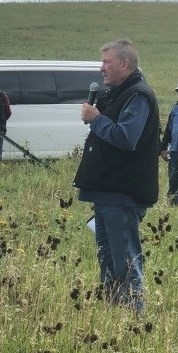
Darrell Oswald has served on the advisory board since 2013 and is the chair of the board. He ranches near Wing, N.D., and is a district technician with the Burleigh County Soil Conservation District.
Oswald truly has a passion for the land and his family, and a genuine desire to help others succeed. He believes in a holistic approach to managing cattle and the land. It is a way of ranching that, when possible, mimics the cycles of nature at work 150 years ago when bison roamed the land.
His experience in ranching and range management brings a perspective to the board that keeps us thinking outside the box. He provides futuristic thinking in terms what the needs will be for our ranchers and reminds us that we do this work for the people and family while always being good stewards of the land and livestock.
Martin (Marty) Marchello
Marty Marchello has served on the board since 2015. He brings a passion for the outdoors, a desire to help others, experience in always trying to improve our grasslands for livestock and wildlife, and the knowledge of a researcher.
Marchello received his Ph.D. from Virginia Polytechnic Institute and State University in 1968 and began his a career as a meat science professor in the NDSU Animal and Range Sciences Department in 1970. Now he is a professor emeritus in the department. He loves to try different grassland management strategies to improve the native plant diversity on his own land, where he lives with his wife, Barbara.
What I appreciate most from him is he is a thinker. He is not afraid to think outside the box, and he always tries to stay current. He is not afraid to tell you what he thinks and always is open to discuss what will improve our grasslands or a rancher’s operation, and create an outdoor experience that improves recreational activities for the next generation.e is
Arlyn Scherbenske
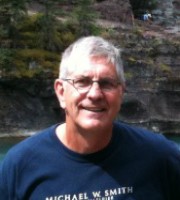
Arlyn Scherbenske has served on the board since 2015. He has been with Steele Veterinary Clinic since he earned his Doctor of Veterinary Medicine degree from Iowa State University in 1980.
Scherbenske brings to the board livestock health and husbandry experience, which helps us discuss what types of livestock studies and educational programs we can do to enhance reproduction and nutrition. His willingness to help others succeed and grow is a great asset to the board because he makes us think of what should, or could, be done to enhance our natural resources while improving the health of livestock and the lives of our state’s ranchers.
The North Dakota Veterinary Medicine Association recognized him as the Veterinary of the Year in 2005. Most recently, the NDSU Saddle and Sirloin Club named him the Little International 2017 Agriculturist of the Year.
County Corner: Palmer Amaranth Found in N.D.
Alicia Harstad, Extension Agent, Agriculture and Natural Resources, Stutsman County
We have several tough-to-control weeds in North Dakota, including kochia, waterhemp, lambsquarters and common ragweed, to just name a few. But now we have a new weed to add to the list in North Dakota: Palmer amaranth.
Palmer amaranth (Amaranthus palmeri S. Wats.) is a very aggressive weed and is difficult to control with herbicide, unlike any other weed we have in North Dakota. It can grow 2 to 3 inches per day, reaching 6 to 8 feet tall, and can produce up to 1 million seeds per plant. To put that in perspective, kochia can produce up to 25,000 seeds per plant.
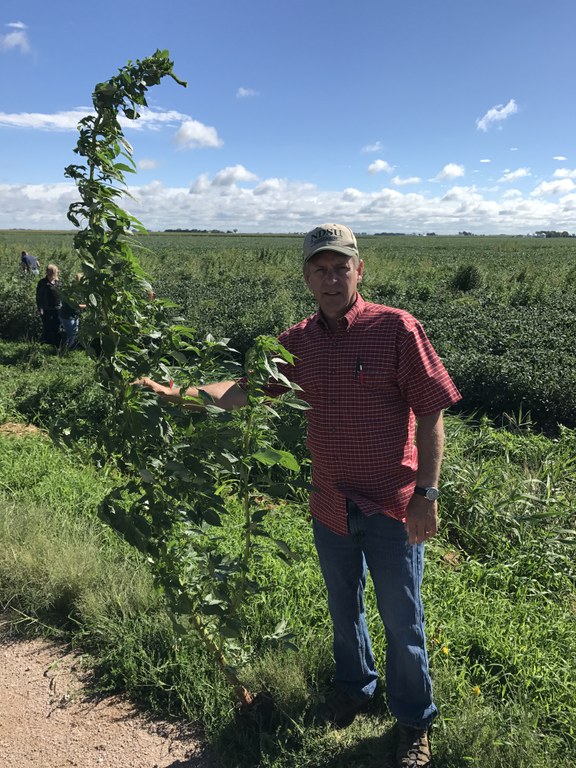
Palmer amaranth has been confirmed in five counties in North Dakota by a laboratory DNA test. Anything that can move seed potentially can move Palmer amaranth to other areas including water, equipment, feed, seed, birds or wind. Because of this, scouting fields and knowing how to identify Palmer amaranth are extremely important. It is not a matter of if Palmer amaranth will spread throughout North Dakota but a matter of when.
Palmer amaranth is in the pigweed family and looks very similar to redroot pigweed and waterhemp. Palmer amaranth and waterhemp have a smooth stem, while redroot pigweed has a hairy stem.
One key identifying characteristic of Palmer amaranth that distinguishes it from waterhemp is the long petiole, or stem, that attaches the leaf to the main stem. The petiole is quite a bit longer than the leaf blade. The leaves often have a small spike at the tip.
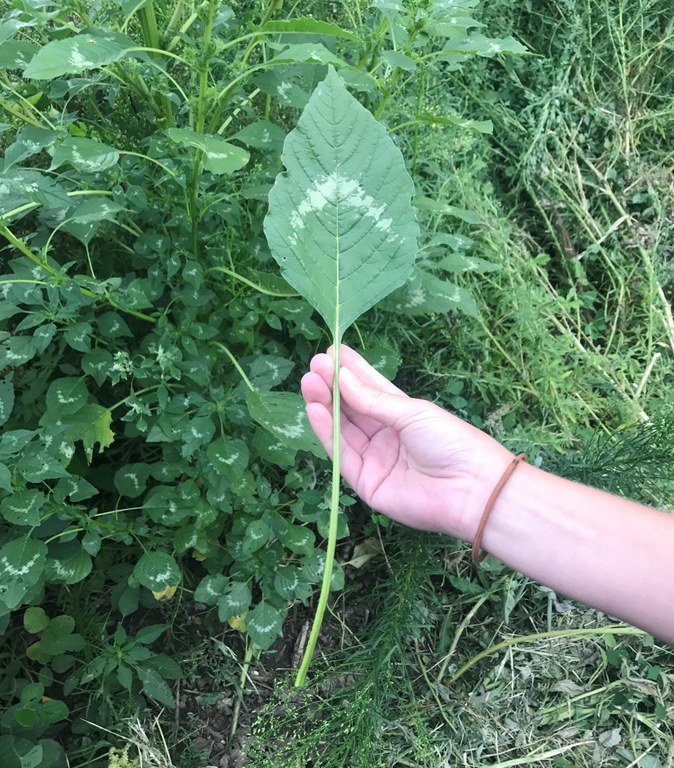
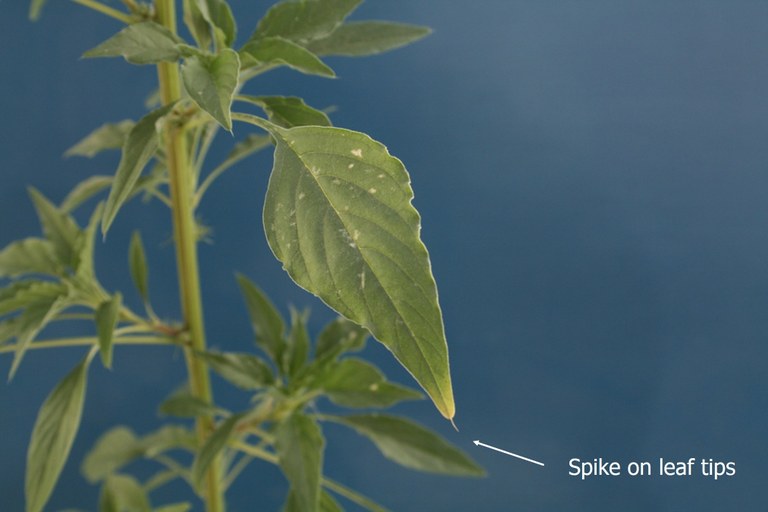
The seed heads also can help with identification. Palmer amaranth has a long, snaky seed head that can grow up to 2 feet long.
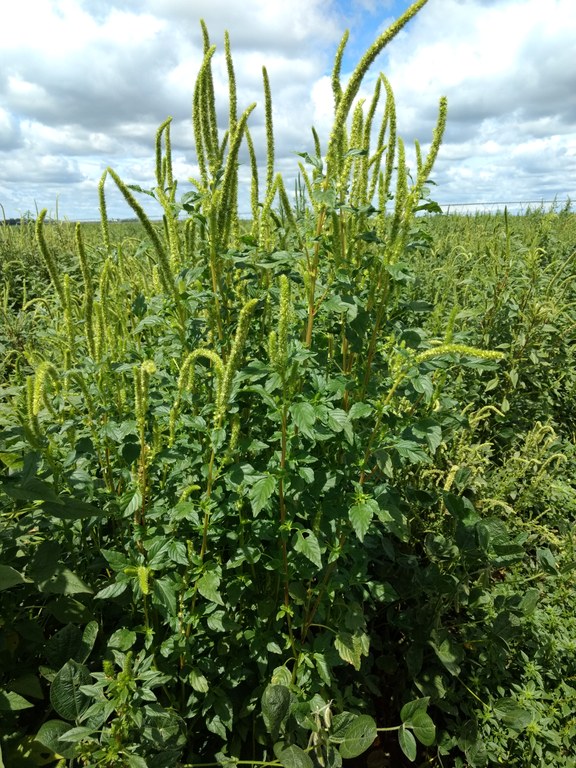
If anyone has questions about Palmer amaranth identification, they can contact NDSU Extension’s Stutsman County office at 701-252-9030 or email me at alicia.harstad@ndsu.edu.
Photos by NDSU
Upcoming Events
Dec. 11: CGREC Advisory Board Meeting at CGREC office
Feb. 10 - 14: Society for Range Management 72nd Annual Meeting in Minneapolis MN
Central Grasslands Forum - Fall 2018 (Part 2)



